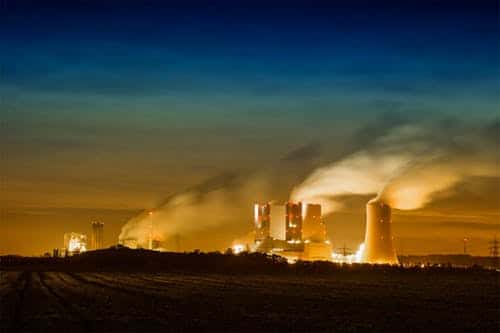U.S. Agriculture Department Proposes Rule for Carbon Capture Permitting

The U.S. Department of Agriculture’s Forest Service on Nov. 3 issued a proposed rule that would enable the agency to consider carbon capture and sequestration projects on national forests and grasslands. This move aims to align the regulatory structure with the U.S. Department of Interior’s Bureau of Land Management and meet President Biden’s ambitious goal of achieving a net-zero emissions economy by 2050.
Carbon capture and storage, or CCS, involves injecting and storing carbon dioxide underground in subsurface geological formations. While the U.S. owns the subsurface pore spaces below forest lands, the injection of carbon dioxide for CCS purposes, which can last over 1,000 years, essentially constitutes exclusive and perpetual use. The proposal would provide an exemption for carbon capture and storage from the agency’s special use regulations that prohibit authorizing exclusive and perpetual use and occupancy of National Forest System lands.
Approximately 1.2 gigatons of carbon dioxide need to be captured and sequestered annually by 2030 to maintain progress toward the 2050 net-zero emissions target, according to the International Energy Agency. The U.S. Forest Service administers 74,000 special use authorizations for diverse activities on National Forest System lands, which significantly contribute to the national economy and rural communities.
The U.S. Environmental Protection Agency has designated CCS as non-hazardous if it adheres with the requirements for Class VI Underground Injection Control wells, which are used to inject carbon dioxide into deep rock formations. EPA serves as the permitting agency for geologic carbon sequestration wells, also known as Underground Injection Control Program Class VI injection wells, under the Safe Drinking Water Act.
The Department of Energy has recently announced up to $1.2 billion for the establishment of two commercial-scale direct air capture facilities. In line with these efforts, the White House has introduced a committee focused on shaping pertinent policies and conducting research on the safe and efficient removal and sequestration of marine carbon dioxide. Meanwhile, state-level initiatives have also gained traction, with Colorado passing legislation to develop a carbon management roadmap, and New York contemplating the implementation of carbon farming tax credits. However, some carbon capture projects in the U.S. Midwest have encountered setbacks due to state regulatory measures rejecting permits for prominent carbon dioxide pipeline projects. As part of the expanding carbon management landscape, efforts now encompass various strategies such as forest management, ocean carbon sequestration, and bioenergy with carbon capture and storage.
Currently, there are no carbon capture project proposals for consideration by the Forest Service. All potential proposals must undergo secondary screening and comply with the National Environmental Policy Act. Furthermore, the agency’s authorization is contingent on approval by an authorized officer, and the proposed rule does not supersede existing tribal treaty rights, agreements, authorities, and land use. The Biden administration has emphasized the importance of ensuring that any carbon capture and sequestration projects adhere to the highest safety and scientific standards, as well as reflect the interests of local communities.
Comments on the proposed rule are due by Jan. 2, 2024.
EnerKnol Pulses like this one are powered by the EnerKnol Platform—the first comprehensive database for real-time energy policy tracking. Sign up for a free trial below for access to key regulatory data and deep industry insights across the energy spectrum.
ACCESS FREE TRIAL